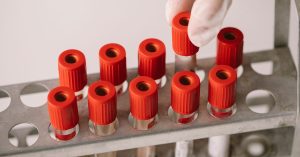What is Gynaecologic Oncology Follow-Up: Overview, Benefits, and Expected Results
Definition and Overview
Patients who have received treatment for gynaecologic cancer are required to make follow-ups with their gynaecologist and oncologist usually for surveillance or monitoring.
Gynaecologic cancers refer to malignancies that affect one or several of the organs comprising the female reproductive system. These include the vagina, cervix, uterus, vulva, endometrium and the ovaries. Cancer may begin in any of these organs or occur due to metastasis as in the case of cervical cancer spreading to the vagina.
Contrary to popular belief, only 10% of diagnosed cancer cases among women can be attributed to gynaecological cancers. Breast cancer remains to be the top form of cancer followed by lung and colon. However, only 20% of those with gynaecological cancer survive their condition.
Although a prompt diagnosis and proper treatment are the foundations of an excellent survival outlook for gynaecological cancers, a follow-up ensures that the patient remains well taken care of even after treatment and the recovery period.
Who Should Undergo and Expected Results
A gynaecologic oncology follow-up is performed:
After the patient has gone through the needed treatments – A huge part of gynaecologic oncology is treatment, and so far, treatment options for patients include chemotherapy, immune therapy, surgery such as hysterectomy and radiation therapy. A follow-up is performed to (1) monitor the effects or complications of these treatments, (2) minimize the risks of these treatments to the patient’s health and activity, and (3) control the complications if ever they do occur.
If the patient is under palliative care – Palliative care is suggested if the patient no longer wants to go through treatments or the plan didn’t work, which means the cancer has not slowed down, become undetected, or stopped from progressing. In palliative management, symptoms are taken care of as they appear. A follow-up, therefore, is a good way to detect these symptoms so they can be controlled as soon as possible.
When recurrence is possible – All types of cancer have the possibility to recur. Thus, even if the patient hasn’t showed signs of the disease, follow-up is still conducted.
To know if cancer has spread – If cancer has recurred, the next information the oncologist wants to know is whether it has spread. In some cases, the spread doesn’t happen along with the recurrence.
How Does the Procedure Work?
The follow-up care is discussed even before the needed treatments are initiated. This is necessary to remind the patient that the disease has to be managed long after the symptoms have disappeared or the treatment has been completed.
The schedule of follow-ups depends on different factors such as the kind of cancer, stage, and treatment performed. The patient’s overall health condition and preferred participation during the treatment and follow-up will also matter.
For example, according to the gynaecologic oncology follow-up guidelines, patients with endometrial cancer have to be checked every 3 to 6 months within a year following the treatment. In the succeeding years, as long as the stage has not progressed, the follow-up will be conducted yearly. The more serious the stage is, the more frequent the follow-up will become, especially within the first year. Rare tumours such as germ cell and sex cord stromal tumors are monitored more closely at an interval of 2 to 4 months during the first two years.
During the follow-up, the gynaecologic oncologist will assess the symptoms and review the results of tests. One of the examinations that are usually conducted are blood assays like CA 125, which is normally used for ovarian cancer patients. However, it should be noted that the results of these tests don’t necessarily mean the cancer has not disappeared or that it has returned or progressed. They simply mean that an abnormality is present, which may require further surveillance from the oncologist and the general gynecologist.
Each follow-up lasts about 20 minutes, and the first one is often the longest. In between, tests are conducted. Depending on the patient’s need, the gynaecologic oncologist may refer the patient to other professionals such as an endocrinologist or even a counselor.
Possible Risks and Complications
Often, low-risk patients are not required to go through intensive follow-up. For example, they may have to be monitored only when symptoms appear. This decision by the doctor may cause increased anxiety among patients. A strong and close relationship between the two can enhance comfort and, most of all, trust that the doctor only has the best welfare of the patient in mind.
References:
Freund K. Approach to women’s health. In: Goldman L, Ausiello D, eds. Goldman’s Cecil Medicine. 24th ed. Philadelphia, PA: Saunders Elsevier; 2011:chap 245.
Schrager SB, Paladine HL, Cadwallader K. Gynecology. In: Rakel RE, ed. Textbook of Family Medicine. 8th ed. Philadelphia, PA: Saunders Elsevier; 2011:chap 25.
/trp_language]
**What is Gynaecologic Oncology Follow-Up?**
Gynecologic oncology follow-up is a crucial part of cancer care for individuals who have been diagnosed and treated for gynecological malignancies. It involves regular monitoring and evaluation to assess the patient’s recovery, detect any recurrence of the disease, and manage potential long-term effects of treatment.
**Overview of Gynaecologic Oncology Follow-Up**
Follow-up typically begins after the completion of initial treatment and consists of:
* **Physical exams** to check for signs of recurrence or new physical findings.
* **Diagnostic tests** such as blood tests (tumor markers, CBC), imaging (ultrasound, CT, MRI), and biopsies if necessary.
* **Discussions with the healthcare team** about the patient’s recovery, physical and emotional well-being, and any concerns.
**Benefits of Gynaecologic Oncology Follow-Up**
Regular follow-up provides numerous benefits, including:
* **Early detection of recurrence:** Prompt identification and treatment of any signs of recurrence can significantly improve the prognosis.
* **Management of treatment side effects:** Follow-up allows healthcare providers to monitor and address potential long-term side effects of cancer treatment, such as hormonal imbalances, fatigue, and lymphedema.
* **Emotional support and encouragement:** Follow-up appointments provide patients with an opportunity to connect with their healthcare team, receive support, and address any concerns or anxieties.
* **Improved quality of life:** Regular monitoring and intervention can help enhance the patient’s overall well-being and quality of life after cancer treatment.
**Expected Results of Gynaecologic Oncology Follow-Up**
The expected results of follow-up vary depending on the individual’s cancer type, stage, and treatment. It typically aims to:
* **Maintain a state of no evidence of disease (NED):** The primary goal is to ensure that the cancer has not recurred.
* **Manage potential side effects of treatment:** Identify and address any long-term effects of treatment, such as hormonal imbalances or fatigue.
* **Support the patient’s physical and emotional well-being:** Provide emotional support, address concerns, and encourage healthy lifestyle choices.
* **Enhance long-term survival and quality of life:** Regular follow-up contributes to improved outcomes, increased life expectancy, and overall well-being.
**Gynaecologic Oncology Follow-Up: Keywords**
* Gynaecologic Oncology
* Follow-Up
* Cancer Recurrence
* Treatment Side Effects
* Emotional Support
* Quality of Life
* Cancer Care
* Monitoring
* Evaluation
* No Evidence of Disease (NED)
* Long-Term Effects








Definition of gynaecologic oncology follow-up
What are the different types of gynaecologic oncology follow-up